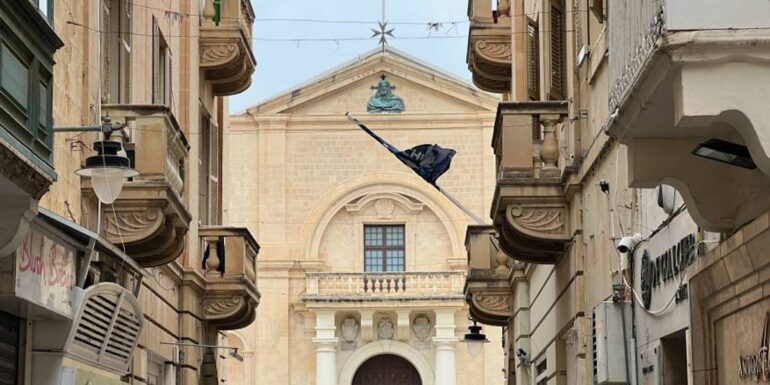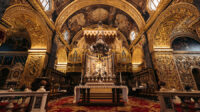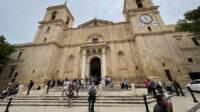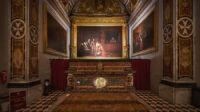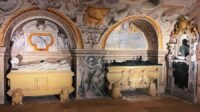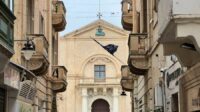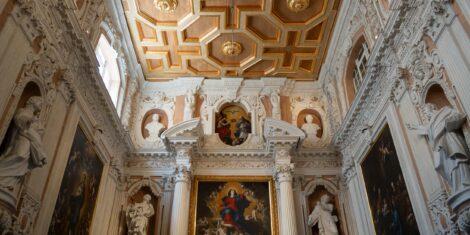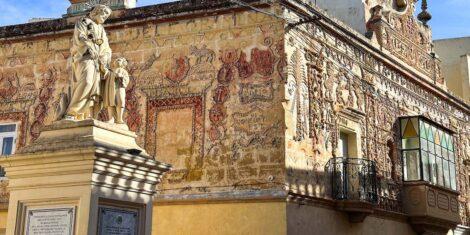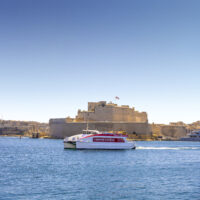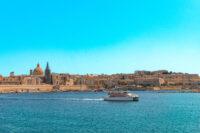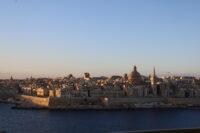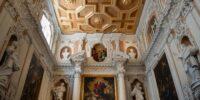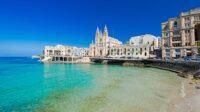Just as a visit to Malta is not complete without a good day in Valletta, a visit to the capital is simply incomplete without a tour of the crown jewel of the city – St. John’s Co-Cathedral.
The sheer beauty and absolute magnificence of this place will give you an experience which is not easy to forget.
The history
The Co Cathedral was built in 1572 to serve as the Conventual church of the Order of St John. That means that it served as their place of worship while the head of the church in Malta – the Bishop, still used the cathedral in the old capital Mdina as his seat of power. While it was built for the knights, It only became a co-Cathedral in the 1820s. By this time the Knights had been expelled from the island.
Back when the Knights were still favoured in Malta, they had just won the Great Siege of 1565. The iconic Grand Master de Valette had just masterminded the victory that would make him the toast of all of Europe. Naturally, he wanted to build a brand new capital city that would match up with the great capitals of Europe. So that is how they chose the Sceberras peninsula, close to the harbour.
But as all the great cities had at that time, Valletta needed magnificent palaces and churches. The Knights knew that for Valletta to compare with Paris or Rome, they needed to build the best their good money could afford them. That is how the Co Cathedral obtained its unbelievable collection of art and beauty by the best names of the craft.

The Art and architecture
The facade of the edifice is rather austere in design as it was built in the Mannerist style. It was designed by Girolamo Cassar, a Maltese military architect. Impressively, he was engaged by the Knights to assist Francesco Lapparelli in the design of the city itself.
The grandeur of the Co Cathedral’s history is impressive. Still, it hardly does justice to the interior of the place. Crossing the threshold however is an experience in its own. The interior is one of the finest examples of high baroque decoration. This is the work of Calabrian genius Mattia Preti who was purposely brought over by the Knights.
The man even painted the impressive vault of the main nave with tableau scenes from the life of St John the Baptist. Truly, it is masterpiece of three-dimensionality and light. If you have an eye for art, you can spot many trademark art styles of the time. One such example is Caravaggio’s Chiaroscuro.
Caravaggio
But surely you have already heard of possibly one of the most important paintings in the world which is housed here. The beheading of the Baptist by the mischievious artist Michelangelo Merisi da Caravaggio. The painting is the artist’s largest, and the only one he ever signed. But apart from that, it is considered to be his finest work.
Fun fact about the painting, Caravaggio painted the saint, pictured in the last moments before being beheaded, in his own likeness. He even signed the piece in red. His signature forms part of the blood that appears to be spilling out of the man’s neck. It is said that Caravaggio wanted to send a not-so-subtle message to the Knights who commissioned him the piece. A rather bold statement from Caravaggio! Then again, those were hardly rare for the artist, who led a troubled life.
A veritable temple of beauty
St. John’s Co-Cathedral has nine naives. Eight them are dedicated to the patron saints venerated by each of the eight langues of the Knights. A ninth one is dedicated to Our Lady.
Over the centuries, each of these naives developed into very ornate showcases of which langues were the more prominent and powerful. Each brought in the best sculptors and artists from all over Europe to decorate them.
The floor too is worthy of mention, as it is an amazing work of inlaid marble, the likes of which is rare to see. In fact it is a collection of tombs, celebrating Knights and officials of the Order of St John. It is adorned by their coats of arms, and popular symbols of the time. The symbols remember their achievements of victory and triumph, for centuries to come.
Walking out of the church might need to come with a bit of a warning, as this is probably as close to a mystical experience you will get. So do be careful!
